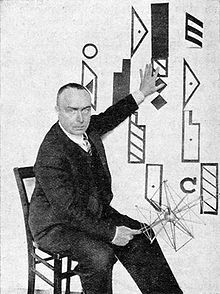I was born in Richmond, Virginia, while my father was completing graduate work in nursing at the Medical College of Virginia (MCV). When I was two, my family moved to my mother’s hometown in upstate New York, just north of the Adirondack Mountains. I went to college in the beautiful Finger Lakes region of New York, which is home to many wineries, and completed medical school at SUNY Upstate in Syracuse, New York. Seeking warmer weather, my husband John and I moved to Memphis, Tennessee, where I completed a residency in Med-Peds. I’ve been at UVA for almost a year, having moved here last July to begin my fellowship training. My family and I love Charlottesville. Between the mountains, wineries and the four beautiful seasons, it feels a lot like home.
Why research? Why endocrinology?
Medicine was a natural choice for me. I am the first physician in my family, but I come from a long line of nurses–both my parents are nurses. I also married a nurse, so some might call me the “black sheep” of the family!
I think my favorite part of medicine is the stories you hear. Every patient has their own tale to tell, and I love hearing them. For many patients, chronic illness is a big part of their narrative; as a physician, I value the opportunity to become part of their life story. It is an honor.
Why endocrinology? When I studied the endocrine system in medical school, I thought, “I would do anything but this. It’s too complicated.” But once I started residency training, I found that all my favorite and most interesting cases were endocrine-related. It’s a fascinating field, and now I can’t imagine doing anything else.
Why UVA?
I was thrilled to come to UVA to study endocrinology. The division not only has an incredible history, but a great future as well. Working in the Pituitary Clinic, I have an opportunity to see patients with uncommon conditions, and I also get to work with a team that includes faculty and fellows from Neurosurgery and, for case reviews, the Pathology department. I also have the opportunity to learn about exciting technological advances in the care of diabetes, particularly the artificial pancreas device.
Proudest achievement outside the professional realm?
I would be remiss if I didn’t mention my husband John and children Declan and Ryker. I’m humbled to have a partner who has been willing to follow me around for quite a long time while I chase my dreams. And having two children while in residency would surely have killed me without his support. My two boys, ages 1 and 3, are wild and wiggly. I’m very proud of them.
What are you usually doing in your spare time?
Wrangling my wild and wiggly children into bed. And also, exploring Charlottesville with our extended families — we are blessed that both sets of grandparents live here in town. We have especially enjoyed the local farmers’ markets and the hiking trails.
What’s one thing you always have in your fridge?
Does the freezer count? Ben and Jerry’s Chunky Monkey ice cream.
Where did you go on your last vacation?
My idea of a great vacation involves a lot of R&R. A few years ago, my husband and I went on vacation to Puerto Vallarta, Mexico. It was all sandy beaches and umbrella drinks. Next: maybe Virginia Beach?
If you could learn to do anything, what would it be?
Speak Spanish. Also, make sushi.
Words to live by?
“Don’t borrow trouble.”
What about you would surprise us?
I had a minor in dance when I was at Hobart and William Smith (HWS) Colleges as an undergrad. I loved singing and dancing while growing up, and it was great to turn that into an academic area of study at college.
I took several courses to learn about Rudolph Laban, who developed a notation system (Labanotation) in the 1920s for making written “scores” for choreography — similar to the way you create a musical score. As you can imagine, using a two-dimensional notation system to record three-dimensional body movements is extremely challenging. More than once, I thought it was completely foolish. But sometimes when I am in lectures related to cellular biology, I think of Laban. Human beings are very brave to attempt to map all of the signaling pathways at work in our bodies! I think Laban would approve.
Filed Under: News and Notes




